An Overview of Ramakrishna Movement in Punjab and Haryana
The author is the secretary of Ramakrishna Mission Ashrama, Kanpur. He gratefully acknowledges the valuable and timely help in various ways that he received from many monks, brahmacharis, devotees and volunteers in preparing this article. E-mail: atmashraddha@gmail.com
‘This [Punjab] is the land which is held to be the holiest even in holy Aryavarta; this is the Brahmavarta of which our great Manu speaks. This is the land from whence arose that mighty aspiration after the Spirit, ay, which in times to come, as history shows, is to deluge the world. This is the land where, like its mighty rivers, spiritual aspirations have arisen and joined their strength, till they travelled over the length and breadth of the world and declared themselves with a voice of thunder. This is the land which had first to bear the brunt of all inroads and invasions into India; this heroic land had first to bare its bosom to every onslaught of the outer barbarians into Aryavarta. This is the land which, after all its sufferings, has not yet entirely lost its glory and its strength. Here it was that in later times the gentle Nanak preached his marvelous love for the world. Here it was that his broad heart was opened and his arms outstretched to embrace the whole world, not only of Hindus, but of Mohammedans too. Here it was that one of the last and one of the most glorious heroes of our race, Guru Govind Singh, after shedding his blood and that of his dearest and nearest for the cause of religion, even when deserted by those for whom this blood was shed, retired into the South to die like a wounded lion struck to the heart, without a word against his country, without a single word of murmur . . . ’1
This is how Swami Vivekananda described Punjab and its glorious past. This was in 1897 when he gave his famous lecture titled ‘Common Bases of Hinduism’, the first of his three lectures given in Lahore in the Undivided Punjab. Besides being a remarkable piece of oratory, this also gives an idea of how well-acquainted Swamiji was with the history of Punjab. The present-day Indian Punjab, however, is a much smaller geographical entity than what Swamiji visited and spoke about. The march of history has taken its toll on the ‘land of five rivers’. Things have changed over the years.
It would be appropriate and imperative that before we sift the facts and details of how the ancient land of Punjab is connected with Ramakrishna-Vivekananda, and the Movement that bears the name Ramakrishna Movement, we draw a quick outline of Punjab, Punjabis and their rich culture. This will be an exercise in recalling, briefly but contextually, the historical, geographical and cultural perspective in which the Ramakrishna Movement started and has been working to spread, slowly but steadily, its message of harmony, peace and brotherhood, based on a spiritual outlook of life in the states of Punjab and Haryana. We should first know what does ‘Punjab’ consist of.2
The Historic Land of Undivided Punjab
Punjab, or Panjab, is one of the oldest regions on the earth where humans began to live. It is a geographical and cultural region in the northern part of the Indian subcontinent, comprising parts of eastern Pakistan and northern India. Until the Partition of India, and of Punjab, in 1947, the British Punjab Province encompassed the present-day Indian states of Punjab, Haryana, Himachal Pradesh, Union Territory of Chandigarh, and most parts of National Capital Region or Delhi, and the Pakistani provinces of Punjab and Islamabad Capital Territory. It bordered the Balochistan and Pashtunistan regions to the west, Kashmir to the north, the Hindi Belt to the east, and Rajasthan and Sindh to the south.
The Indus Valley Civilisation or Sarasvati Civilisation or the Indus-Sarasvati Civilisation, one of the early and the most widespread cradles of civilisations, originated and flourished in Punjab. It is also called Harappan Civilisation— named after the site where the remains of this civilisation were excavated in 1856 by the British engineers John and William Brunton who were laying the East Indian Railway Company line connecting the cities of Karachi and Lahore. Harappan Civilisation was a highly developed and organized civilisation and its discovery redefined the way the world history was written. While the sites of Harappan civilisation are in Pakistan and other states of India, Punjab is the place where it started. Punjab, in that sense, is the cradle of human civilisation and culture.
On account of its geographical location and vulnerability, Punjab has seen numerous invasions by the Persians, Greeks, Kushans, Ghaznavids, Timurids, Mughals, Pashtuns, British, and others. These invasions mainly targeted the most productive central region of the Punjab known as the Majha region (other two being Deoba and Malwa), which is also the bedrock of Punjabi culture and traditions. Scores of dynasties and imperial powers have ruled Punjab—and lost it too. It has naturally made the people brave and strong, ready to face challenges of life with strength, courage and gusto.
Punjab is witness to numerous exploits motivated by greed for wealth and power, plunder and the inhuman side of mankind, alongside the inherent spirit of resilience, bravery and goodness which mark the culture of Punjab, nurtured by numerous Hindu and Sufi saints (such as Kabir, Baba Farid and Bulleh Shah), alongside the great Sikh Gurus, who have blessed its people and history by their lives and teachings.
Punjab is also the land where the Rigveda (the oldest scripture known to mankind), Ashtadhyayi (Sanskrit Grammar) of Panini, Nirukta (one of the six Vedangas, dealing with etymology and interpretation of Vedic terms) of Yaska and Charaka Samhita (one of the foundational texts of Ayurveda), among many others, are believed to have been revealed or written.
The religion of Sikhs originated in Punjab, setting in motion the glorious tradition of sant-sepahis, ‘saint-warriors’, who exemplified selfless service, courage, hard work and sharing and caring for others. The Sikh tradition was organized and consolidated into Khalsa (literally ‘pure’ or ‘genuine’, refers to the army of initiated Sikhs represented by the five beloved-ones, started in 1699, by Guru Gobind Singh) which led to the formation of the Sikh Confederacy by the legendary Maharaja Ranjit Singh of Punjab after the fall of the Mughal Empire. It was a glorious time for Punjab when, among his other notable achievements, Maharaj Ranjit Singh covered the sacred Harmandir Saheb in Amritsar with 750 kg of gold, thus bringing it the well-known name, Golden Temple, a shrine central to Sikh tradition and spirituality. The Guru Granth Saheb, enshrining the compositions of the Sikh Gurus, from Guru Nanak Dev to Guru Gobind Singh, as also of several Hindu and Sufi saints and devotees from Punjab and other parts of India, is the living presence in the Golden Temple. In recent times, the Golden Temple was declared as the ‘world’s most visited place of pilgrimage’.
Then came the British with their vested interests. The entire Punjab region was annexed by the British East India Company in 1849. That was the making of the Punjab Province of British India. Like other regions of India during the colonial rule, Punjab too witnessed widespread exploitation of her people and malicious looting of her wealth and resources, reducing her rich and fertile land into one of poverty, starvation and misery.
In 1947, after a long fight for freedom, India was freed of the British colonial reign but at the terrible cost of partition of the country and one of the ‘biggest migrations’ or displacements of populace in human history. The Punjab Province of British India was divided along religious lines into West Punjab and East Punjab. The West Punjab became a part of Pakistan while the East stayed with India. The cruel and inhuman violence that erupted in the wake of mass migration from either side—the newly formed Pakistan and the mainland India—left indelible scars on the collective psyche of Punjab. Uprooted from their homeland and social and financial moorings, millions of Punjabis had to find new roots and to work hard to return to normal life again. A large number of Punjabi migrants settled in Delhi, and in several parts of Uttar Pradesh, Madhya Pradesh and other states in north India. While the gruesome scenes of death and mass migration left behind on their mind indelible and traumatic memories, it did not deter the undying spirit of the Punjabis who rebuilt their lives and once again came up in material prosperity, scientific advancement and other fields of social and cultural development.
No wonder Swami Vivekananda described the tough times Punjab passed through in its chequered history thus: ‘Wave after wave of Barbarian conquest has rolled over this devoted land of ours. “Allah Ho Akbar!” has rent the skies for hundreds of years, and no Hindu knew what moment would be his last. This is the most suffering and the most subjugated of all the historic lands of the world.’3
In 1966, some twenty years after India became free, the Indian Punjab was further divided on the basis of language, and for better administration, into three parts: Haryanvispeaking areas were carved out as Haryana, Pahari-speaking and Hilly regions into Himachal Pradesh and Punjabi speaking areas remained as Punjab. Here is a description of these three states:
The State of Punjab, or Indian Punjab, is bounded by Pakistan on the west, Jammu and Kashmir to the north, Himachal Pradesh on the northeast and Haryana and Rajasthan to the south. The dominant language spoken is Punjabi with many regional shades of differences and several dialects, as also Hindi and Urdu. Some of the shades of Punjabi and the dialects spoken by Punjabis are Majhi (standard Punjabi), Malwai, Doabi, Pwadhi, Western Punjabi, Shahpuri, Jhangochi/Changvi, Jangli/Rachnavi, Pothohari/Pahari-Potowari, Hindko, Dhani, Jafri/Khetrani, Chenavar and Saraiki. Each of these language traditions has its own distinct usage, pronunciation and history.
A large number of Punjabis (more than 10 million), both Sikhs and Hindu Punjabis, have migrated to United Kingdom, Canada, USA and other countries, carrying with them Punjabi language, culture, cuisine and value systems. Some of them have risen to many public offices of high order in those countries. The Hindu Punjabis follow a composite culture of worship of Krishna, Rama, Durga, Ganesha and other gods and goddesses of the Hindu Pantheon, alongside a reverential and regular reading of Sri Guru Granth Saheb, full or in parts (such as Japuji Saheb, Sukhmani Saheb, Rehras Saheb, Anand Saheb and other sacred compositions of the Sikh Gurus). A significant segment of Hindu Punjabis, deriving their inspiration from Swami Dayananda Saraswati, follow the principles and practices of Arya Samaj which he founded in 1875.
The State of Haryana is bordered by Himachal Pradesh to the north-east, by river Yamuna along its eastern border with Uttar Pradesh, Rajasthan to the west and south, and Ghaggar-Hakra River flows along its northern border with Punjab. Since Haryana surrounds the country’s capital, Delhi, on three sides (north, west and south), a large part of Haryana is included in the economically-vibrant National Capital Region for the purposes of planning and development.
Haryana too has a few Indus Valley Civilisation sites in Hisar and Fatehabad districts. Haryanvi, a dialect of Hindi, is the dominant language spoken in Haryana—along with Bagri and Mewati, the two other dialects spoken both in Haryana and parts of Rajasthan. Rich in history, monuments, heritage, flora and fauna and human resources with a welldeveloped economy and roads, Haryana has its own cultural identity and distinctive features. Kurukshetra, the place where Mahabharata War was fought, and the Bhagavad Gita was delivered, is in Haryana. Sri Ramakrishna’s Vedanta Guru, Sri Totapuriji, hailed from Undivided Punjab, and the monastery where he lived is located in Ladana, near Kaithal close to Kurukshetra4 .
The State of Himachal Pradesh, the third state that emerged from the Indian Punjab, is situated in the Western Himalayas. It is bordered by the states of Jammu and Kashmir to its north, Punjab in the west, Haryana to the southwest, Uttarakhand in the southeast, and the Tibet Autonomous Region in the east. At its southernmost point, it also touches the state of Uttar Pradesh. The state’s name was coined from the Sanskrit—him means ‘snow’ and anchal means ‘land’ or ‘abode’.
Like Punjab and Haryana, Himachal Pradesh’s history too dates to the Indus valley civilisation. During the Vedic period, several small republics known as Janapadas existed which were later conquered by the Gupta Empire. After a brief period of supremacy by King Harshavardhana, the region was divided into several local powers headed by chieftains. These kingdoms, which enjoyed a large degree of independence, were invaded by the Delhi Sultanate a number of times. Mahmud Ghaznavi conquered Kangra at the beginning of the 10th century. Timur and Sikander Lodi also marched through the lower hills of the state and captured a number of forts and fought many battles. Several hill states acknowledged Mughal suzerainty and paid regular tribute to the Mughals.
The Himachal Pradesh is home to many Devi temples such as Jwalamukhi, Nayana Devi, Chinnamastaka, Chamunda, Tara Devi and others. Since pre-historic times, several tribes such as the Koili, Hali, Dagi, Dhaugri, Dasa, Khasa, Kinnar, Kirat and others have been inhabiting this region. Himachali, the dominant language of Himachal Pradesh, has many dialects and usages. The state is known for its natural environment, hill stations, and scenic beauty. Blessed with perennial rivers, Himachal Pradesh has several hydroelectricity plants which produce surplus power that is sold to Delhi, Punjab, Rajasthan and other states. Bhakra-Nangal dam, one of the tallest dams in the world, is in Himachal Pradesh.
Punjab, Haryana and Himachal Pradesh are in the forefront of protecting India’s borders by sending its brave young men to Indian army besides playing an important role in commerce, industry, agriculture and other areas of our national life. A good number of leading figures of India’s freedom struggle were from these states.
The Perennial Rivers of Punjab
A description of Punjab will remain incomplete without mentioning its historic and perennial rivers after which it is named. Besides their antiquity, these rivers have been part of the history of Punjab, silent witnesses to numerous wars, celebrations, births and deaths of various dynasties and hence occupy great significance in any discourse on Punjab’s history. These are rivers of life, influencing Punjab’s culture, economics and social lives. It is these rivers that make Punjab ‘the Granary of India’ or ‘the Bread Basket of India’.
Punjab is mentioned in the Vedas as Sapta Sindhu, the land of the seven rivers flowing into the ocean. These rivers are called in Sanskrit Saraswati (thought to be the present day Ghaggar), Satadru/Shutadri (Sutlej), Vipasa (Beas), Asikani/Chandrabhaga (Chenab), Iravati (Ravi), Vitasta/Vet (Jhelum) and Sindhu (Indus).
The present name, Punjab, is a compound of two Persian words, panj (five) and aab (water). It was introduced and promoted by the Turko-Persian conquerors of India, and more formally popularised during the Mughal Empire. Punjab meaning ‘The Land of Five Waters or Rivers’, refers to the rivers Jhelum, Chenab, Ravi, Sutlej, and Beas. All of them are tributaries of the Indus River, the Chenab being the largest. After Partition, only Sutlej, Ravi and Beas are part of the Indian Punjab. All the five rivers of Punjab were known to the Greeks who called them in Greek as follows: Indus was called Indos, Jhelum as Hydaspes, Chenab as Akesines, Ravi as Hydroatis, Satluj as Hyphasis and Beas as Hesidros.
The Indus River (or Sindhu) is one of the longest rivers in Asia. Originating in the Tibetan Plateau in the vicinity of Lake Manasarovar (now in China), the river runs a course through the Ladakh region of Jammu and Kashmir in India, towards Gilgit-Baltistan and the Hindukush ranges, and then flows in a southernly direction along the entire length of Pakistan to merge into the Arabian Sea near the port city of Karachi in Sindh.
The term ‘India’ is a Greek and Latin term for ‘the country of the River Indus’. Elsewhere, the Pakistani province of Sindh also owes its name to the river. The ancient Greeks referred to the Indians (people of present-day India and Pakistan) as ‘Indio’, ‘the people of the Indus’. The Rigveda describes several rivers, including ‘Sindhu’. The Rigvedic ‘Sindhu’ is thought to be the present-day Indus river and is attested 176 times in its text. Swami Vivekananda brings out an insightful connection between the river Sindhu and the term Hindu. He says, ‘The word Hindu, by which it is the fashion nowadays to style ourselves, has lost all its meaning, for this word merely meant those who lived on the other side of the river Indus (in Sanskrit, Sindhu). This name was murdered into Hindu by the ancient Persians, and all people living on the other side of the river Sindhu were called by them Hindus. Thus this word has come down to us; and during the Mohammedan rule we took up the word ourselves. There may not be any harm in using the word of course; but, as I have said, it has lost its significance, for you may mark that all the people who live on this side of the Indus in modern times do not follow the same religion as they did in ancient times. The word, therefore, covers not only Hindus proper, but Mohammedans, Christians, Jains, and other people who live in India.’5
The term ‘Hindu’ obviously has historic connection with Undivided Punjab where the river Sindhu passed through. Now, due to political divisions, the major part of the river flows through the Pakistan Punjab.
Swami Vivekananda’s Visit to Punjab
Swami Vivekananda visited the Undivided Punjab in 1898, almost a year after he returned from his triumphant mission in the West. He was accompanied, in some places, by his Western disciples such JJ Goodwin, Sister Nivedita, Mr. and Mrs. Sevier and one or two monks and some devotees and disciples. The places that Swamiji visited in the Undivided Punjab are: Ambala, Amritsar, Dharamshala, Rawalpindi, Sialkot and Lahore with some visits in-between to Murree, Baramulla and Srinagar. Life of Swami Vivekananda by His Eastern and Western Disciples6 gives good details of his travels, and interactions with people, in Punjab, Haryana and Himachal Pradesh.
In Ambala
It was when Swamiji was in Almora, a hill town now in Uttarakhand, that he began receiving invitations from the people of Punjab who, like those in South India and elsewhere, were keen to see and hear from him. Swamiji left Almora on 2 August 1898, via Bhimtal and Bareilly, to Ambala. It may be mentioned that Ambala was a part of Undivided Punjab then, and now it is in the state of Haryana. It is located almost on the border of the two states. The city is organized as Ambala City and Ambala Cantonment.
On 12 August night Swamiji left for Ambala Cantonment where he was received at the railway station by a large number of people and taken in a horse carriage to a bungalow that had been arranged for his stay. Here he met Mr. and Mrs. Sevier who had been in Shimla for some three months. In Ambala, Swamiji had religious talks daily with many people of different religious backgrounds—Hindus, Muslims, Brahmo and Arya Samaj.
Swamiji’s Life says that on the morning of the 16 August, at the request of a professor of the Lahore College, Swamiji gave a short lecture into a phonograph (the voice recording device in vogue then). The whereabouts of this phonograph are not known. Swamiji’s recorded voice is not available now though it has been documented that it was recorded in four places—Mysore in Karnataka, Ramnad in Tamil Nadu and Ambala in today’s Haryana, besides a phonograph sent by Swamiji from America to the Raja of Khetri.7
Swamiji was in Ambala from 12 to 20 August 1898. During his stay, however, Swamiji had been unwell. On account of his incessant travels and public speaking for more than a year, Swamiji was not keeping good health and hence in Ambala he was down with fever for most of the time and did not agree to the many requests for public lectures. On 19 August morning he visited Hindu-Muslim School, an institution that interested him for its symbolic name. It is not known where in Ambala this school was located, but it is worth all efforts to find out its history and present status. The same may be stated about other buildings and institutions which Swamiji visited in Punjab, Haryana and Himachal Pradesh. An organized and earnest effort should be made to locate them, and appropriate signage should be put to perpetuate the memories of his visit.
In Amritsar and Dharamshala
On 20 August Swamiji and his companions who included Mr. and Mrs. Sevier, reached Amritsar by train. He was received at Amritsar with honour but remained there only for a few hours before proceeding to Dharamshala for recouping his health and energy. During this short visit to Amritsar, Swamiji was accommodated in the house of Mr. Todormal, Barrister-at-law.
Swamiji went to Dharamshala, a delightful hill station, which now forms part of Himachal Pradesh, and spent some seven or eight days. Except for meeting a few casual visitors, he spent the time quietly, as the guest of Bakshi Sohanlal, a pleader of the Chief Court of the Punjab. It is not known whether Swamiji addressed any public meeting in Amritsar.8
As his health improved and he felt better at Dharamshala, Swamiji journeyed to Amritsar again where he stayed for two days. During his stay, he had long discussions on religious and philosophical subjects with Rai Mulraj and other leading Arya Samajists. Not much is known about the contents of these discussions. It is not known if Swamiji visited the Harmandir Saheb, but some historians suggest that it is quite likely that he did, as Harmandir Saheb was too well known to have escaped his notice.
In Rawalpindi and Murree
On 31 August Swamiji left for Rawalpindi (now in Pakistan). Many people had gathered there to give him a reception, and arrangements had been made for him to stay; but he soon left for Murree, a small hill town now in Pakistan.9
At Murree, Swamiji stayed with Mr. Hansraj, a noted pleader. While Swamiji did not accede to most requests for public talks due to his ill health, he consented and went to the houses of some Bengali residents of the town, where he sang many bhajans. He did give some talks on religious subjects and on his plans for work in various parts of India.
From Murree, Swamiji went to Baramulla by tonga. He left Murree on 6 September and reached Baramulla on 8 September. He then travelled to Srinagar (in Kashmir) where he was the guest of Justice Rishibar Mukhopadhyay. During his stay Swamiji met Raja Rama Singh, the brother of the Maharaja of Kashmir who was deeply impressed by Swamiji’s personality and ideas and ‘voiced his desire to help’ Swamiji carry out his plan of work. Many sadhus, pandits, students, officials of high rank and scores of others met Swamiji. During this visit to Kashmir, Swamiji also visited Pampur, Anantnag, Martand, Avantipur, and finally reached Murree again on October 8 where he stayed till 16 October. At Murree Swamiji was presented an address of welcome to which he ‘gave a talk which delighted the audience immensely’. No transcript of this talk is, however, available.
From Murree, Swamiji came to Rawalpindi (a distance of some 70 km) by tonga, where he was welcomed by some people of acclaim. He met, at the residence of Mr. Hansraj, and talked with Swami Prakashananda of the Arya Samaj. During their conversation renowned people such as Justice Narayan Das, Mr. Bhaktaram, barrister and many others, were present.
In Rawalpindi on Sunday, October 17, Swamiji delivered a lecture to a large audience in Sardar Sujan Singh’s garden. The meeting was chaired by Sardar Sujan Singh and for two hours Swamiji discoursed lucidly on Hinduism, extensively citing from the Vedas. An English disciple who was present there described the scene of Swamiji giving this talk thus10 :
‘Swamiji, sometimes strolling in the course of his lecture, as was his wont, and sometimes leaning against a pillar decorated with foliage, wreaths, and flowers, and himself wearing a beautiful wreath of flowers on his head and a garland round his neck, looked in his flowing saffron-coloured robe and sash, like a Greek god. Moreover, as a background to this, the audience, mostly sitting on the lawn, turbaned and cross-legged, with the sun setting in the distance, made altogether a wondrously picturesque scene.’
At Rawalpindi Swamiji visited a Kali temple many times. At the temple he received and spoke to many visitors from different provinces and gave several religious talks. Swamiji left Rawalpindi on 20 October for Jammu where he met the Maharaja of Kashmir and held discussions with him and others present with him. Swamiji also gave a number of public lectures and was present for the Diwali festival. None of these lectures seem to have been noted in shorthand or otherwise. Jammu has a sizable population of Punjabispeaking populace. Swamiji gave all his lectures in Hindi. Swamiji’s Life records: ‘The power and life that he (Swamiji) put into the Hindi language was so extraordinary that the Maharaja of Kashmir requested him to write a few papers in that language. This he did, and they were greatly appealing.’ Unfortunately, Swamiji’s papers in Hindi are lost in the pages of forgotten history! But it is a great blessing on Hindi language and literature that Swamiji bestowed by speaking and writing in Hindi.
(To be continued. . .)
References
1) Complete Works of Swami Vivekananda, hereafter CW, 1989, Mayavati Memorial Edition, Advaita Ashrama, Kolkata, ‘The Common Bases of Hinduism’, p.366.
2) Most of the details given here are from the online Wikipedia, and a few from Punjab’s oral-tradition.
3) CW, 3:69, ‘Common Bases of Hinduism’.
4) The Vedanta Kesari, 2016, July, ‘A Pilgrimage to The Monastery of Sri Totapuriji’.
5) CW, 3: 118, ‘Vedantism’.
6) Life of Swami Vivekananda by His Eastern and Western Disciples, hereafter Life, Advaita Ashrama, Kolkata, pages 280 to 294.
7) The Vedanta Kesari, 2012, June, ‘That Golden Voice’.
8) Amritsar—literally, the tank of nectar of immortality— was founded in 1577 by the fourth Sikh guru, Guru Ram Das. The fifth Sikh Guru, Guru Arjan, designed Harmandir Saheb to be built in the center of this tank, and upon its construction, installed the Adi Granth. Colloquially pronounced as Ambarsar, Amritsar is situated 50 km from Lahore. The city is also believed to be the place where the Ashrama of Maharishi Valmiki, the composer of Ramayana, once existed. The Jallianwala Bagh is located near Golden Temple.
9) Both Rawalpindi and Murree were parts of the Undivided Punjab. Located in Pir Pinjal range in the Himalayas, Murree is in the Rawalpindi District of Pakistan Punjab. Murree was the summer headquarters of the colonial Punjab Government until 1876 when it was moved to Shimla. Both Rawalpindi and Murree had many Hindu Punjabis and Bengali residents who were Swamiji’s chief hosts. Now Rawalpindi, the fourth-largest city in Pakistan by population, is in the Punjab province of Pakistan. Rawalpindi falls within the ancient boundaries of Gandhara and is in a region littered with Buddhist ruins.
10) Life, pp. 284.
Source : Vedanta Kesari, January, 2019

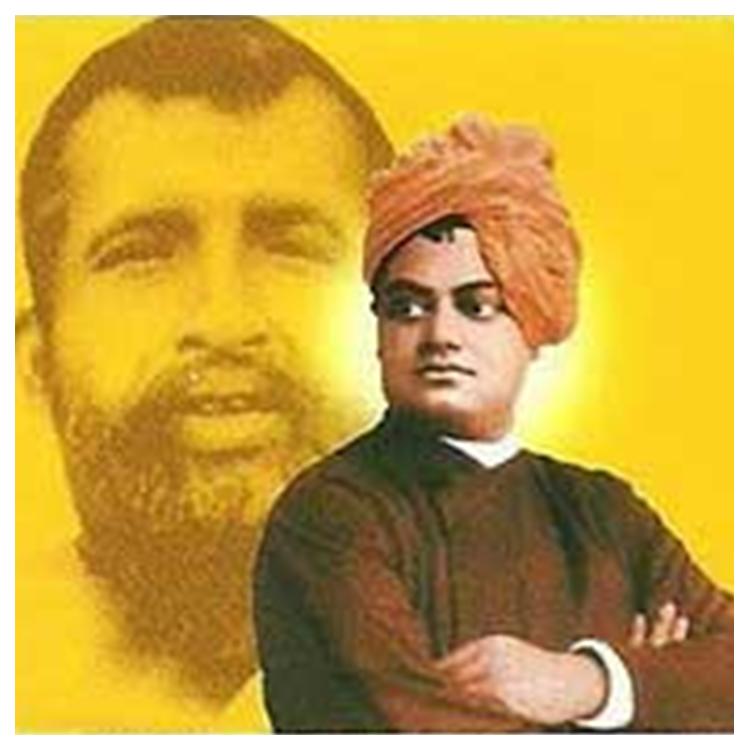
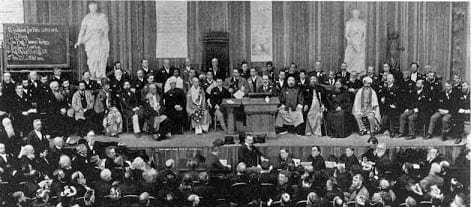

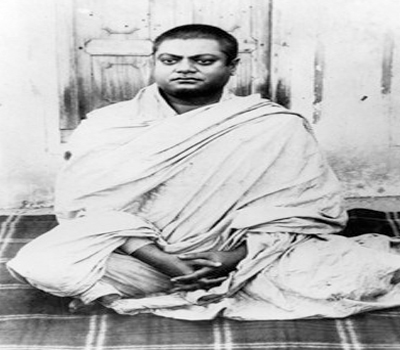
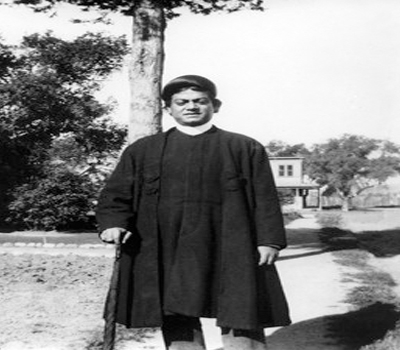
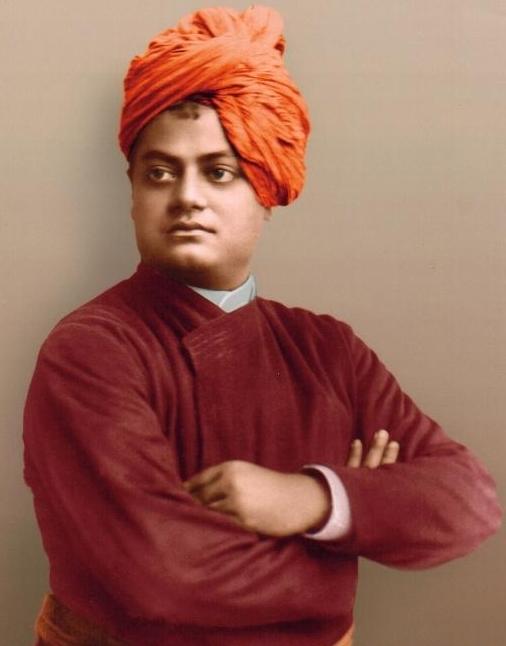
Leave A Comment